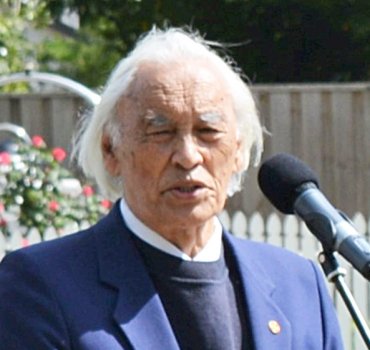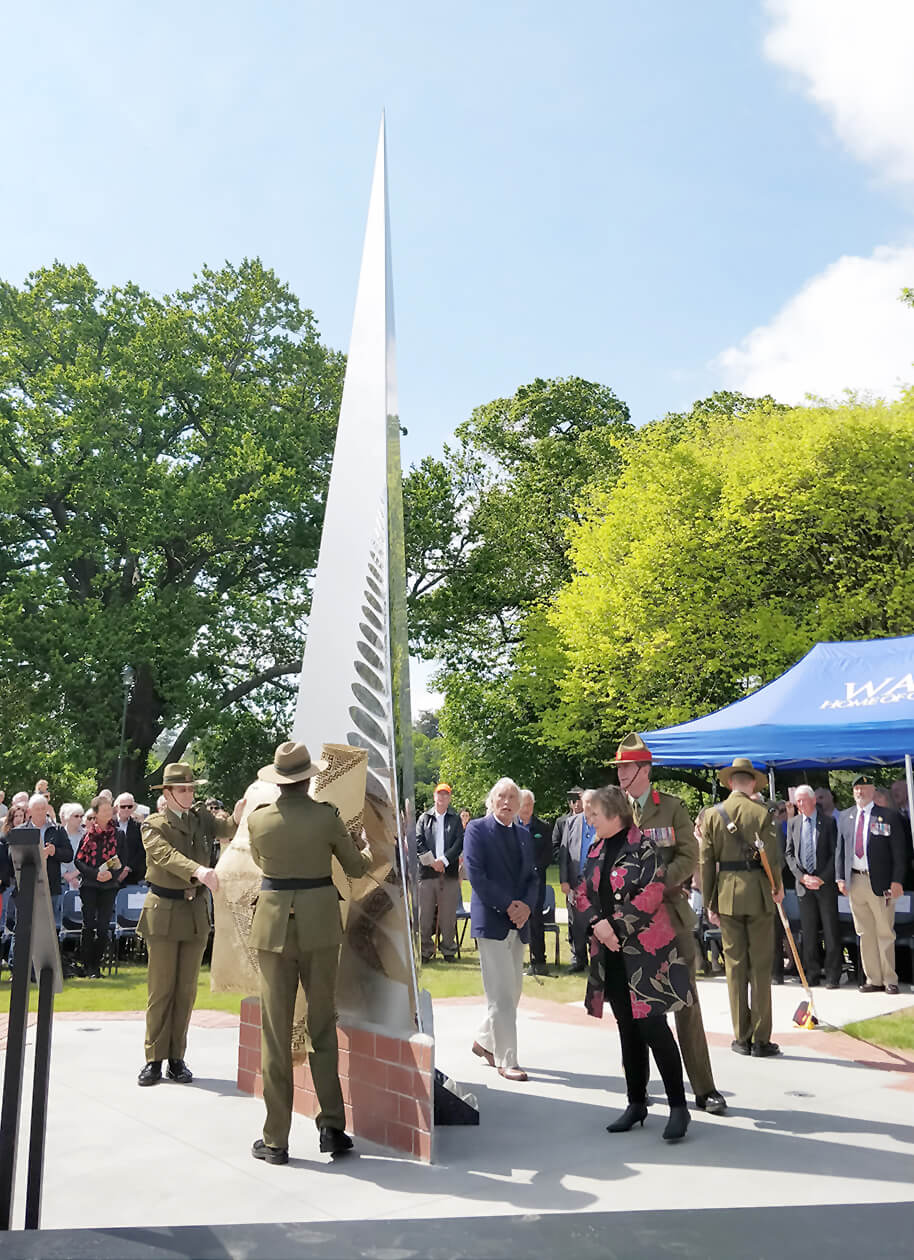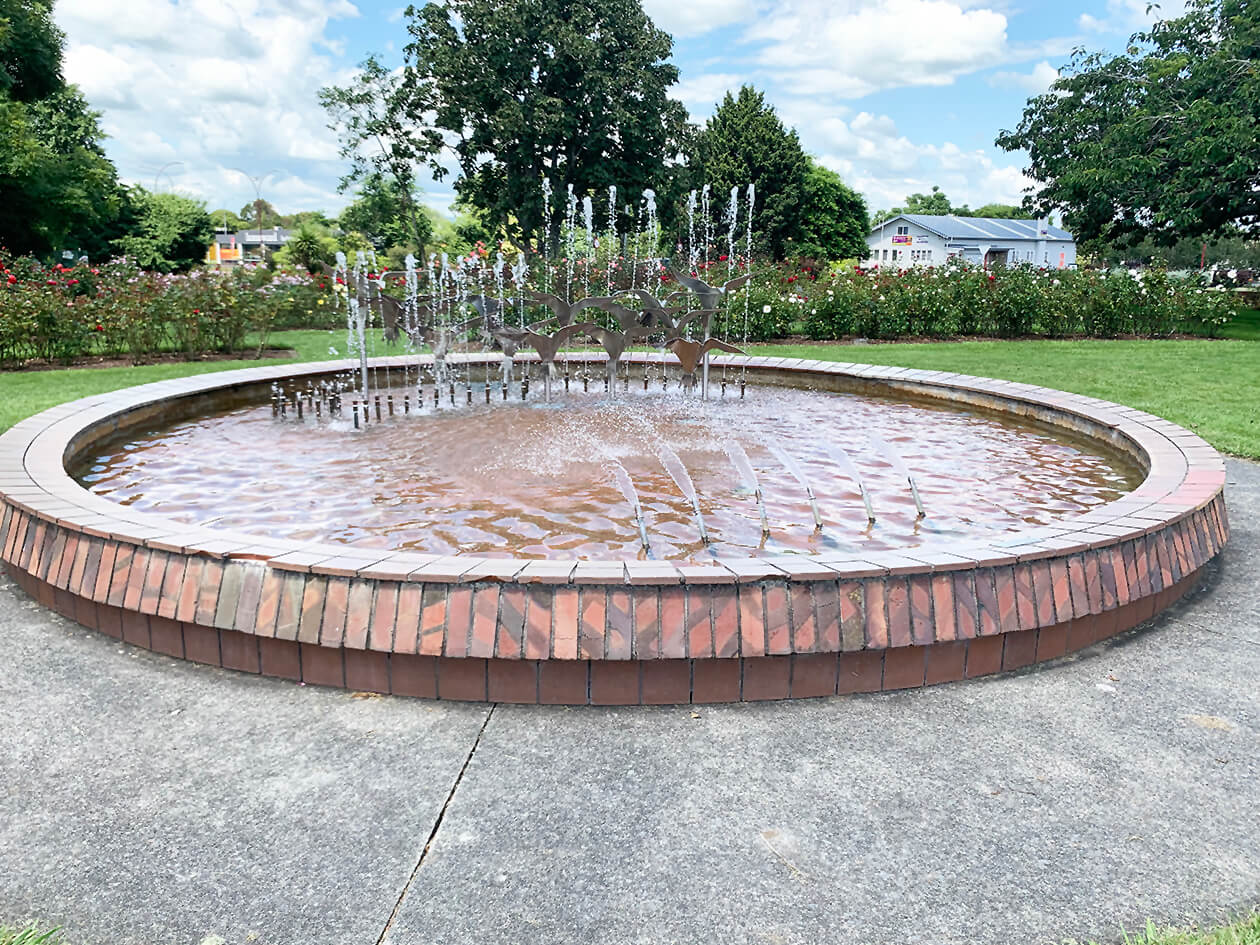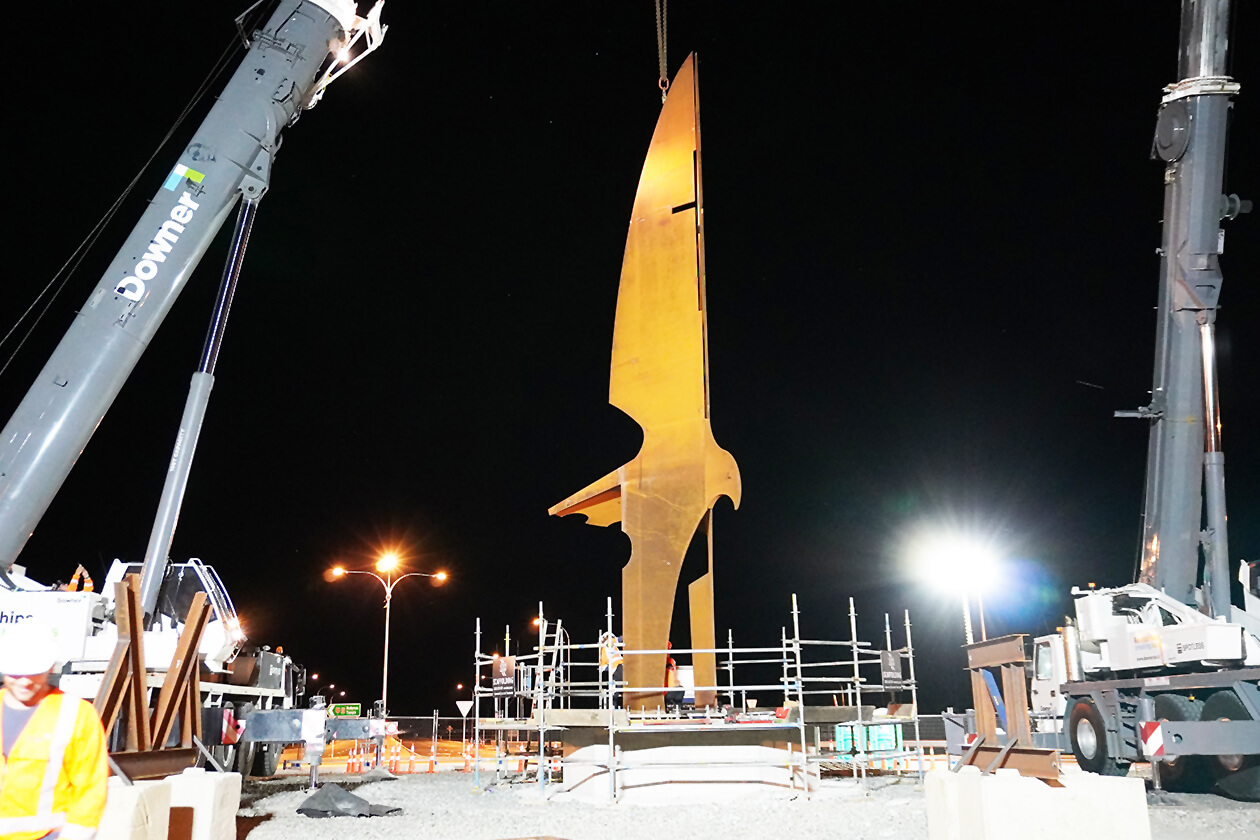
Sculptor Fred Graham explains how he arrived at the design for the sculpture.
Waipā sculptor and arts icon Fred Graham has left pieces of public art around the district which will ensure he is not forgotten.
Graham, 96, who died last week, was born in Arapuni, raised in Horahora and was a Tainui kaumatua of Ngāti Korokī Kahukura descent.
His work includes the newly installed Te Manu Rangimaarie (bird of peace) at the State Highway 1 and 29 Piarere roundabout, Le Quesnoy statue opposite St Andrew’s Church in Cambridge and Waka Tu outside the Don Rowlands Centre in Mighty River Domain.
His work around Te Awamutu includes the carved stone manu with three hatchlings in Sculpture Park and the Lamp Post and Fountain of Birds in the Rose Gardens.
He also created a wooden piece entitled Water Water Everywhere which is inside the council chambers.
Cambridge Community Board member Sue Milner was involved when the Armistice in Cambridge commissioned the Le Quesnoy statute which depicts ferns in the shape of ladders. Ladders were used to mount the French town’s walls in the last days of World War I.
“Fred donated his artistic contribution, for which we are very grateful, and it is a wonderful gift from him to the community,” she said.
He would be remembered for his art, as a teacher, a rugby player and as a gentleman, she said.
The 12-metre high $609,000 sculpture in Piarere, which weighs about 12.5 tonnes, celebrates the connection between hapū and iwi to the land and river and the mythical manu (bird).

Fred Graham, left, looks up at his Le Quesnoy sculpture in Cambridge at its unveiling in 2019 with then Internal Affairs Minister Tracey Martin and Brigadier Jon Broadley. Photo: Mary Anne Gill
Made of weathered steel, Te Manu Rangimaarie presents a story of heritage, unity, and peace and reflects the deep connection between ngā hapū o Waikato (the sub-tribes of Waikato), the land, and the many waterways that run through the region.
Te Manu Rangimaarie is a tribute to Wiremu Tamihana Tarapiipipi Te Waharoa of Ngāti Haua, a key figure in the establishment of the Kīngitanga movement. He dedicated his life to seeking justice and peaceful solutions.
Positioned to face Taupiri maunga Te Manu Rangimaarie also acknowledges a shift in the Waikato River’s course – when it turned from the Hauraki Gulf to Taupiri before flowing west to the sea.
Te Manu Rangimaarie was built in the Hamilton yard of Longveld who worked with mana whenua on several of the large sculptures on the Waikato Expressway, including the Cambridge section and on Hamilton’s Resolution Interchange.











